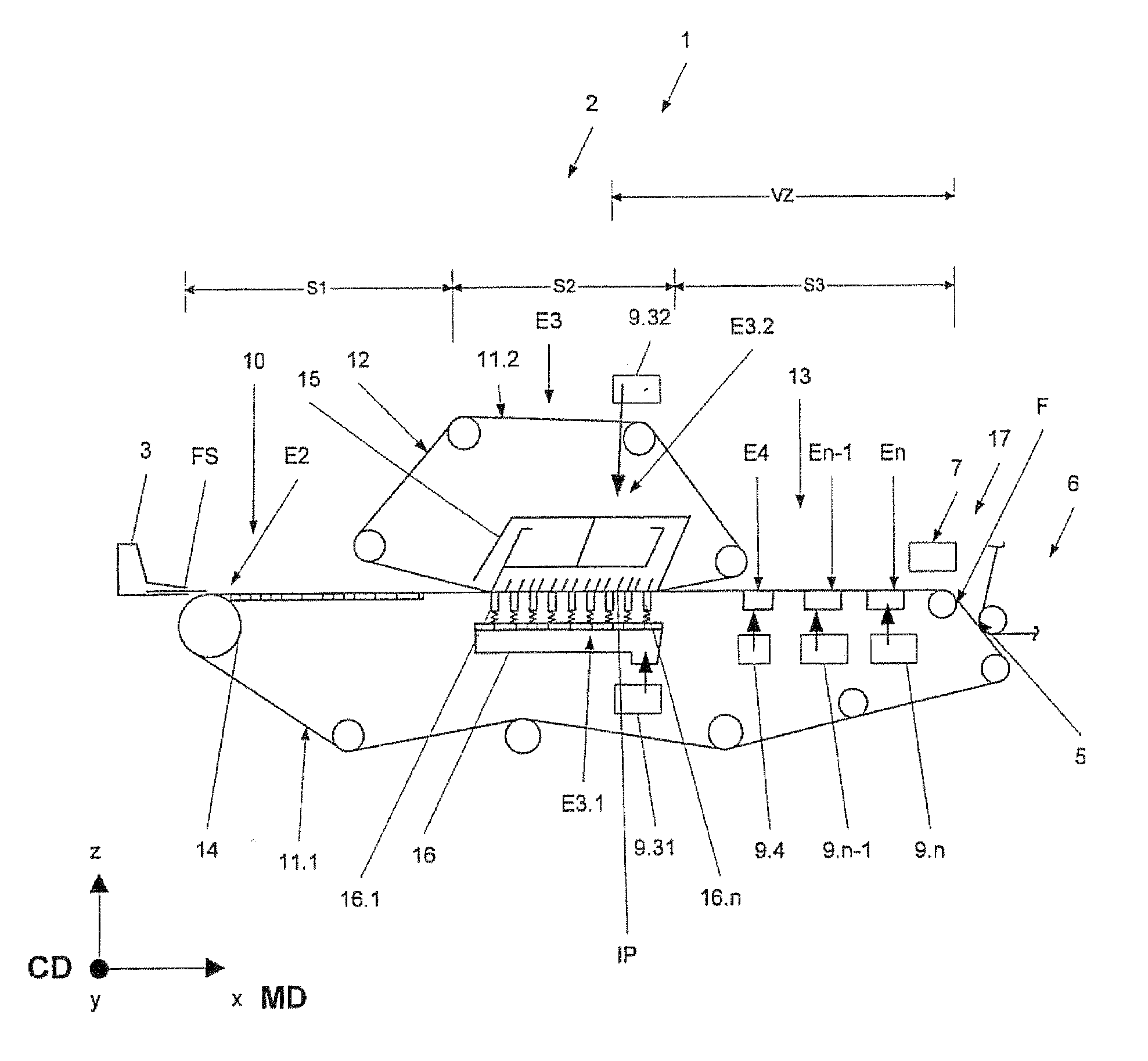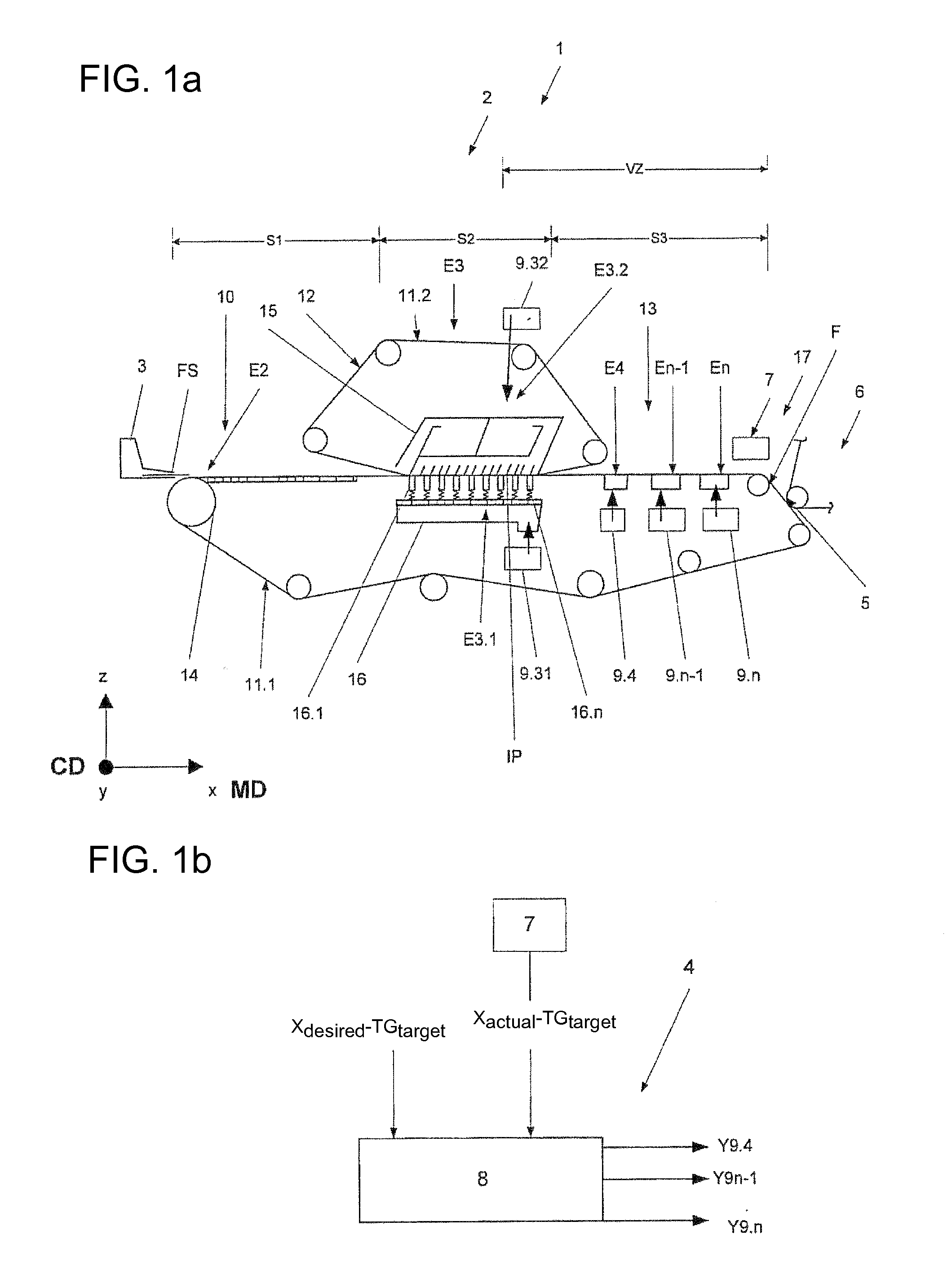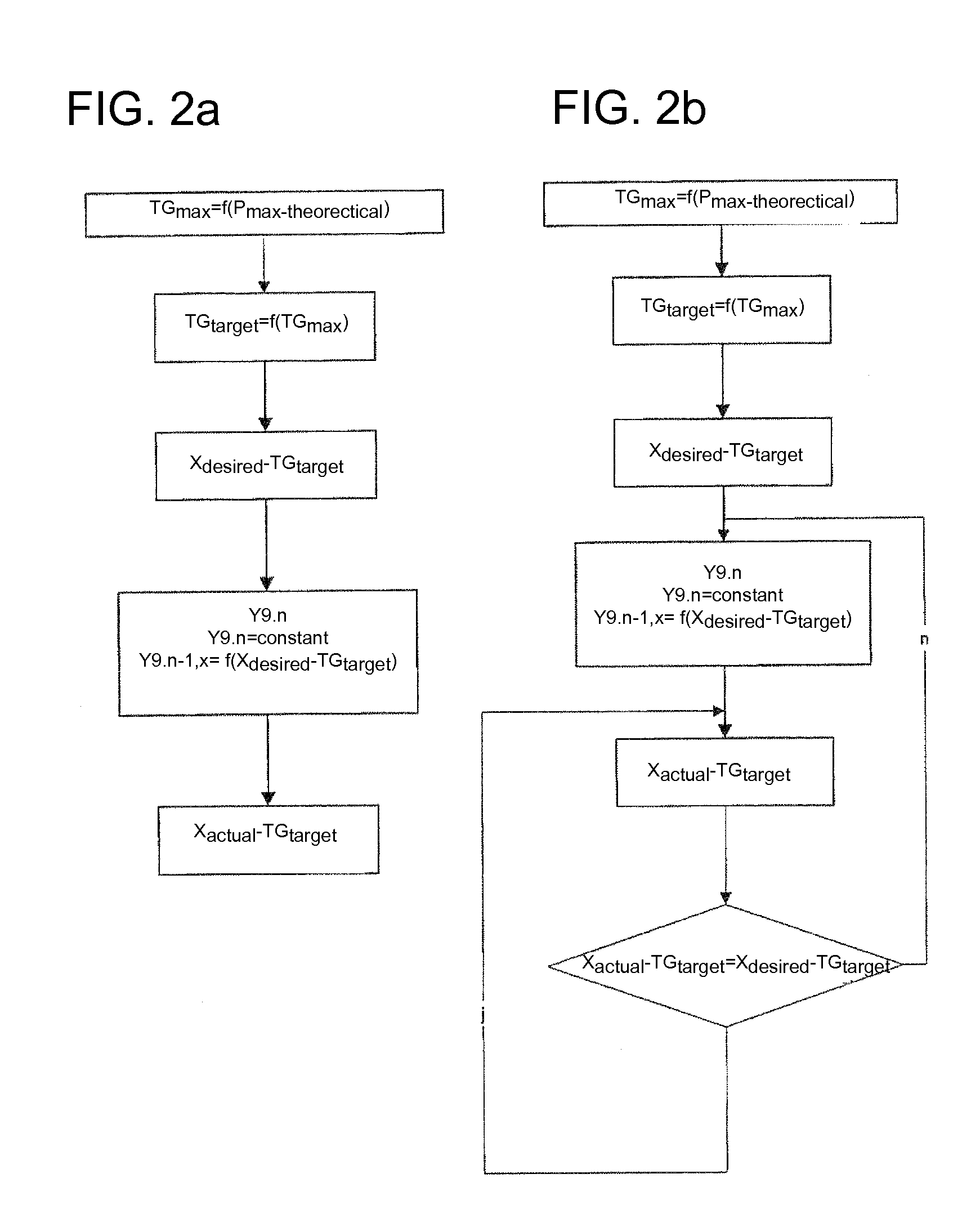Method for optimizing the energy balance in forming sections in machines for the production of fibrous webs, and forming section
- Summary
- Abstract
- Description
- Claims
- Application Information
AI Technical Summary
Benefits of technology
Problems solved by technology
Method used
Image
Examples
Embodiment Construction
[0046]Referring now to the drawings, and more particularly to FIGS. 1a and 1b, FIGS. 1a and 1b clarify in a strongly simplified schematic view of an example of a forming section 1 and a control / regulating system 4 the basic principle of an inventive method for optimization of the energy balance inside the forming section 1 for a machine 2 for the production of fibrous webs, especially fibrous webs F in the embodiment of paper, cardboard or tissue webs. FIG. 1a shows a strongly simplified schematic of a forming section 1, prior to which a headbox 3 is located through which fibrous stock suspension FS is fed to forming section 1. A coordinate system is attached to forming section 1 for clarification of the individual directions. X-direction describes the direction of travel of the fibrous stock suspension FS and therefore the direction which is also referred to as MD in which the material web which was formed from said suspension travels through machine 2 for the production of fibrous...
PUM
 Login to View More
Login to View More Abstract
Description
Claims
Application Information
 Login to View More
Login to View More - R&D
- Intellectual Property
- Life Sciences
- Materials
- Tech Scout
- Unparalleled Data Quality
- Higher Quality Content
- 60% Fewer Hallucinations
Browse by: Latest US Patents, China's latest patents, Technical Efficacy Thesaurus, Application Domain, Technology Topic, Popular Technical Reports.
© 2025 PatSnap. All rights reserved.Legal|Privacy policy|Modern Slavery Act Transparency Statement|Sitemap|About US| Contact US: help@patsnap.com



